
SpaceX is gearing up to wrap up a three-launch salvo of Falcon 9 missions over the weekend, following Friday morning’s pre-dawn liftoff of a 22-strong batch of “downsized” Starlink V2 Mini internet communications satellites from storied Space Launch Complex (SLC)-40 at Cape Canaveral Space Force Station, Fla. On the opposite coast, at Vandenberg Space Force Base, Calif., another Falcon 9 was dramatically scrubbed at T-55 seconds and is now targeting launch early Saturday, with the crew-carrying Ax-2 mission set to close out the weekend with its own Sunday evening flight from from historic Pad 39A at Florida’s Kennedy Space Center (KSC).
Original plans called for two Falcon 9s to rise from the East and West Coasts on Friday, spaced just 8.5 hours apart. Up first from SLC-40 at 12:41 a.m. EDT was the four-times-used B1076, laden with 22 Starlink V2 Mini satellites, followed by the ten-times-flown B1063 from Vandenberg’s Space Launch Complex (SLC)-4E at 6:19 a.m. PDT, carrying five Iridium NEXT global mobile communications satellites and 16 OneWeb advanced broadband satellites. Both missions aimed to land their respective booster cores on Autonomous Spaceport Drone Ships (ASDS) in the Atlantic and Pacific Oceans.
But Mother Nature, as she so often does, offered a potential upset to these plans, with an elevated risk of showers and thunderstorm activity along the Space Coast as the weekend neared. Potential violations of the Anvil Cloud Rule, Debris Cloud Rule and Cumulus Cloud Rule presented a meteorological picture which threatened to creep no higher than about 60-percent favorability.
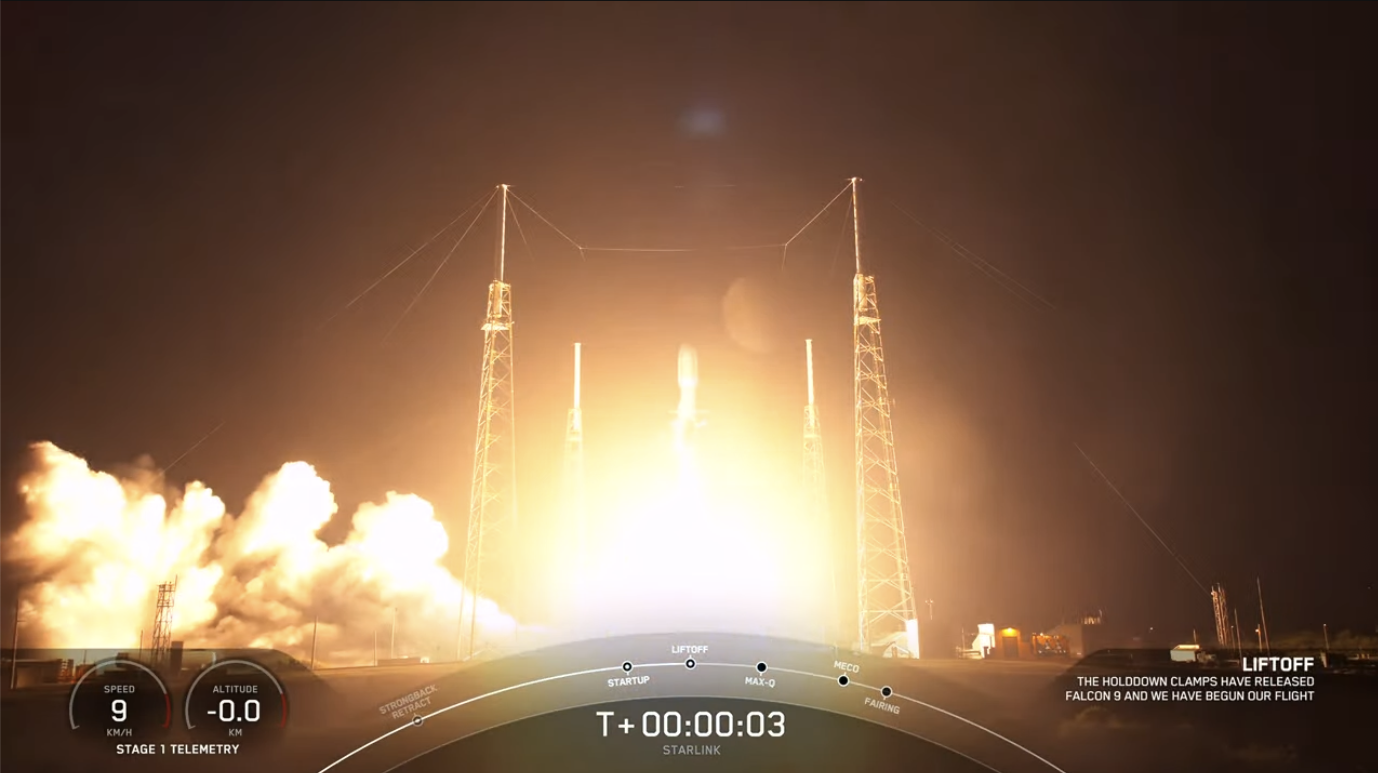
It was therefore unsurprising that SpaceX elected to skip the first pair in a total of four T-0 points for Friday’s pre-dawn launch from SLC-40. The 12:41 a.m. EDT opportunity was missed, with SpaceX noted that weather was “trending better” for the second T-0 at 1:31 a.m. EDT, but ultimately teams elected to await a greater improvement before committing B1076 to her fourth launch of 2023 so far.
Rising into the darkness at 2:19 a.m. EDT, on the third opportunity of the day, she became the first Falcon 9 to log four flights this year. Having entered the Falcon 9 fleet last November to deliver the CRS-26 Cargo Dragon for a six-week berth at the International Space Station (ISS), she lifted 40 OneWeb satellites uphill in January’s second week, the first batch of 21 Starlink V2 Mini satellites in late February and the Intelsat 40e geostationary communications satellite, co-manifested with NASA’s Tropospheric Emissions: Monitoring of Pollution (TEMPO) payload early last month.
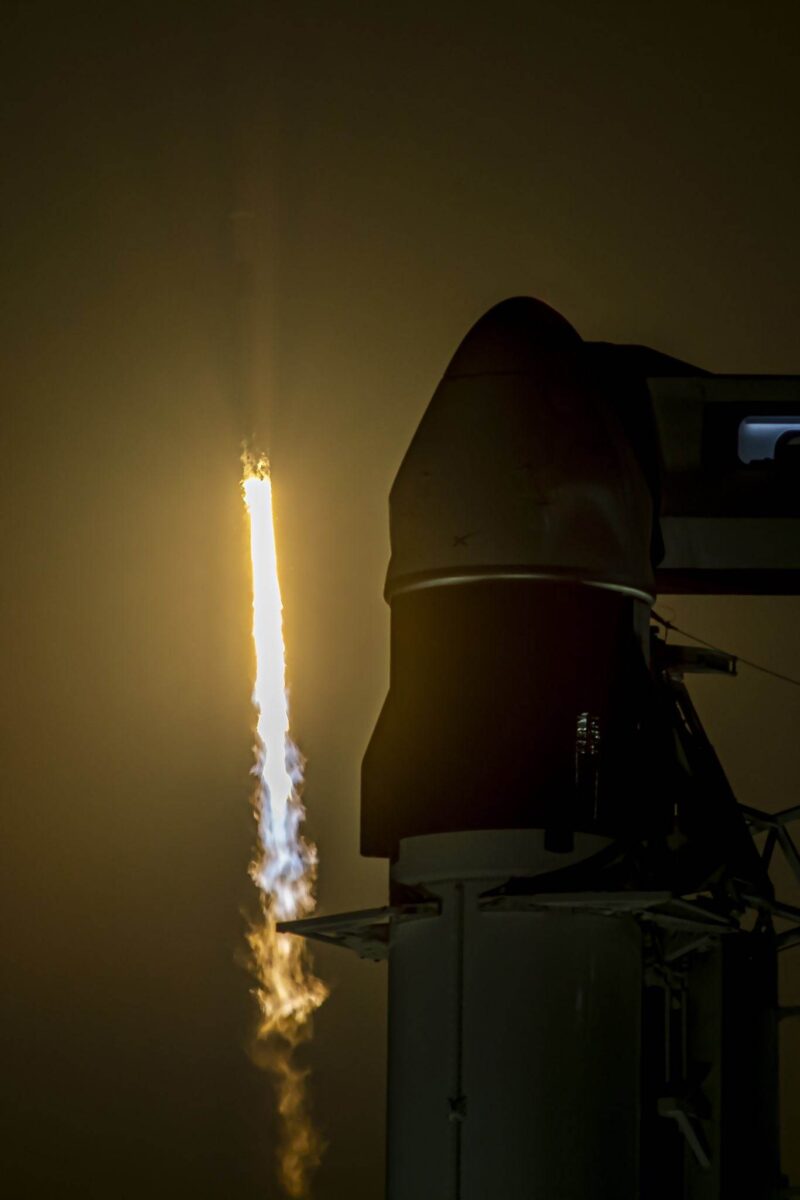
Less than nine minutes after launch, B1076 touched down with pinpoint precision on the deck of the East Coast drone ship, “A Shortfall of Gravitas”, which wrapped up her own tenth Falcon 9 “catch” of the year. A little more than an hour into the flight, the 22 Starlink V2 Minis—tipping the scales at around 38,800 pounds (17,600 kilograms)—were successfully deployed into space, marking the 17th batch of these low-orbiting internet communications satellites to have been launched so far in 2023.
The V2 Minis boast three to four times greater “usable” bandwidth than their predecessors. “V2 Minis include key technologies—such as more powerful phased-array antennas and the use of E-Band for backhaul—which will allow Starlink to provide 4x more capacity per satellite than earlier iterations,” SpaceX explained. “Among other enhancements, V2 Minis are equipped with new argon Hall thrusters for on-orbit maneuvering.”
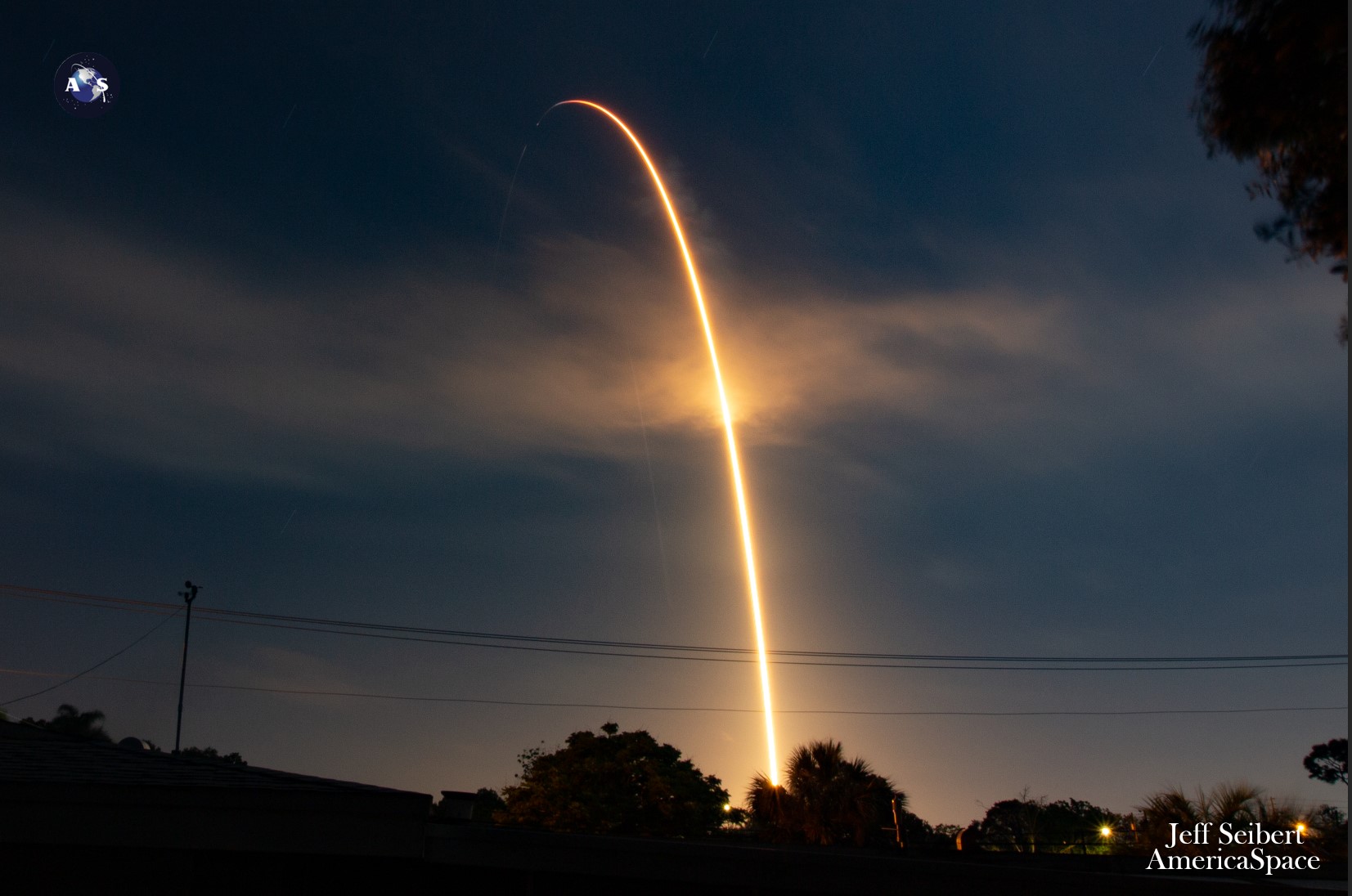
Between May 2019 and this morning, more than 4,300 production-design Starlinks have been launched into orbit, facilitating high-speed and low-latency internet provision across more than 50 sovereign nations and international markets spanning North and South America, Europe, Asia, Oceania and Africa. In the last few weeks alone, Haiti, Ecuador and El Salvador have officially signed up to Starlink.
Florida-based intercity operator Brightline revealed earlier this month that it has adopted the network on its trains, marking the first passenger rail service in the world to do so. And just last week, SpaceX noted that El Salvador’s Ministry of Education has begun integrating Starlink capability into its schools to help close the digital divide.

Attention then turned westwards, where B1063—which has already flown ten times, including two missions so far this year—sat atop SLC-4E at Vandenberg, readying for liftoff at 6:19 a.m. PDT. Leading its haul of payloads for Vandenberg’s second Falcon 9 launch of May are five ground-spares for Iridium NEXT’s global mobile communications network and 16 OneWeb satellites.
In early April, the OneWeb payload—which consists of 15 Generation One satellites and a single beam-hopping Generation Two prototype satellite, nicknamed “JoeySat”—departed its factory in Florida, bound for California. It would mark SpaceX’s fourth OneWeb launch following three prior missions last December, January and March.
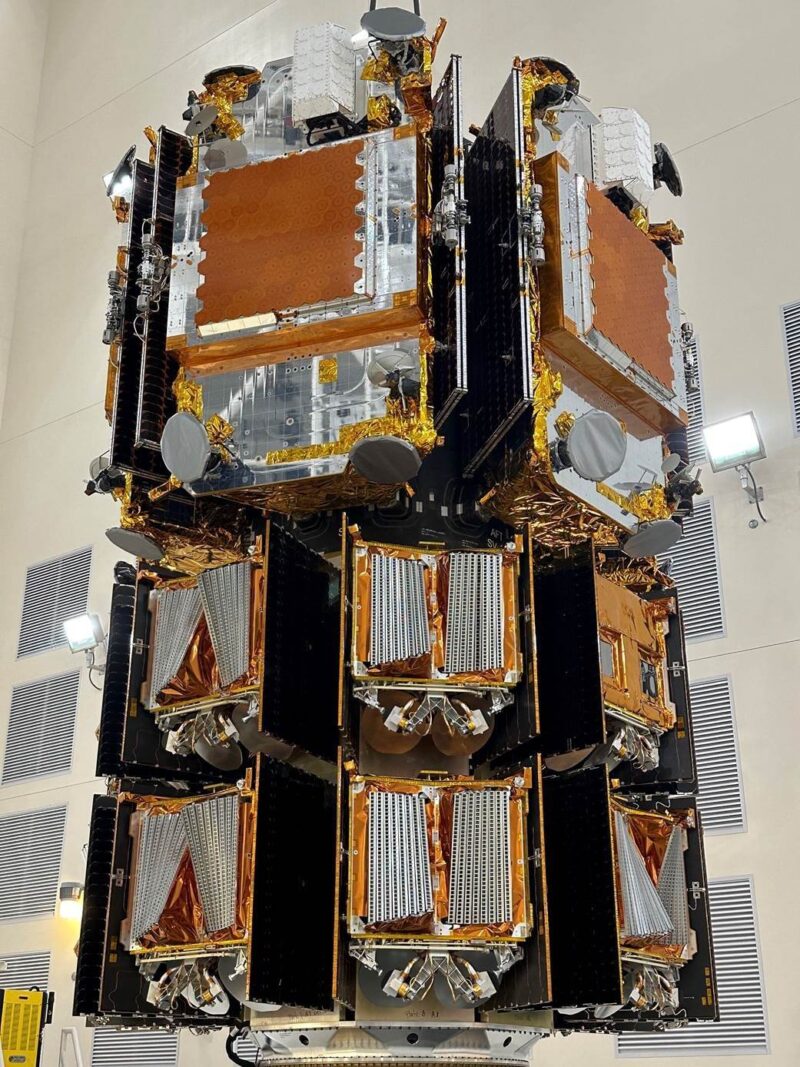
Currently, 618 satellites of an eventual 648-strong OneWeb constellation are in orbit, including 120 lofted by the three Falcon 9 flights and the rest via Russia’s Soyuz and India’s Geosynchronous Satellite Launch Vehicle (GSLV) III. “We can currently provide global satellite coverage with the 618 craft already in orbit,” OneWeb tweeted, “but these extra satellites are set to be added to the constellation to provide extra resilience to our high-speed, low-latency network.”
And the five Iridium NEXT birds make this the ninth mission that SpaceX has flown for Iridium, following eight previous flights out of Vandenberg between January 2017 and January 2019. Those missions delivered 75 Iridium NEXT satellites to orbit.

“The spare satellites have no utility to us on the ground,” explained Iridium CEO Matt Desch, in remarks made last September. “We built extra satellites as an insurance policy and with SpaceX’s stellar track record, we look forward to another successful launch, which will position us even better to replicate the longevity of our first constellation.”
As the countdown clock ticked past T-1 minute on a characteristically foggy Vandenberg morning, B1063 entered “startup”. The rocket’s flight computers assumed primary command of all vehicle critical functions, but at T-55 seconds an abort was called, before the clocks were reset back to T-15 minutes and holding.
“Standing down from today’s launch of the Iridium OneWeb mission,” came a clipped SpaceX tweet in the minutes after the scrub. The next available T-0 for the mission is at 6:15 a.m. PDT Saturday, although at the time of writing it remains to be seen if SpaceX will press ahead with this second attempt.
When B1063 does take flight, she will propel the Falcon 9 aloft for 2.5 minutes, before returning to touch down on the West Coast-based ASDS, “Of Course I Still Love You”. The second stage will then execute a customary six-minute “burn” of its Merlin 1D+ Vacuum engine to deliver the Iridium/OneWeb stack the rest of the way into orbit.
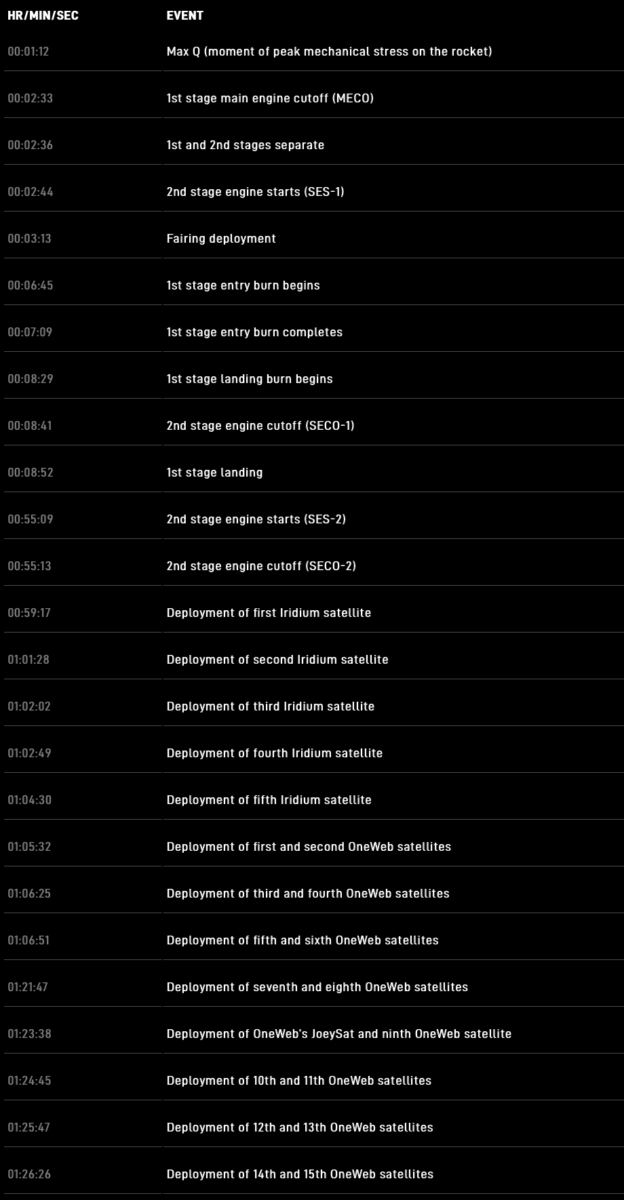
The five Iridiums will be deployed over a roughly five-minute period, commencing 59 minutes and 17 seconds into the flight. And the 16 OneWebs will depart between 65 minutes and 86 minutes, departing the Falcon 9 in pairs, with JoeySat expected to be deployed at 83 minutes after liftoff.
In a fast-moving game of “musical launch sites”, attention will then shift back to the Space Coast and Sunday’s scheduled 5:37 p.m. EDT launch of Dragon Freedom and her Ax-2 crew of Commander Peggy Whitson, Pilot John Shoffner and Mission Specialists Ali Al-Qarni and Rayyanah Barnawi of Saudi Arabia from historic Pad 39A at Florida’s Kennedy Space Center (KSC). Flying on behalf of Houston, Texas-based AxiomSpace, Inc., the quartet will spend a little less than 16 hours in transit to the International Space Station (ISS), before autonomously docking at the space-facing (or “zenith”) port of the Harmony node on Monday morning.
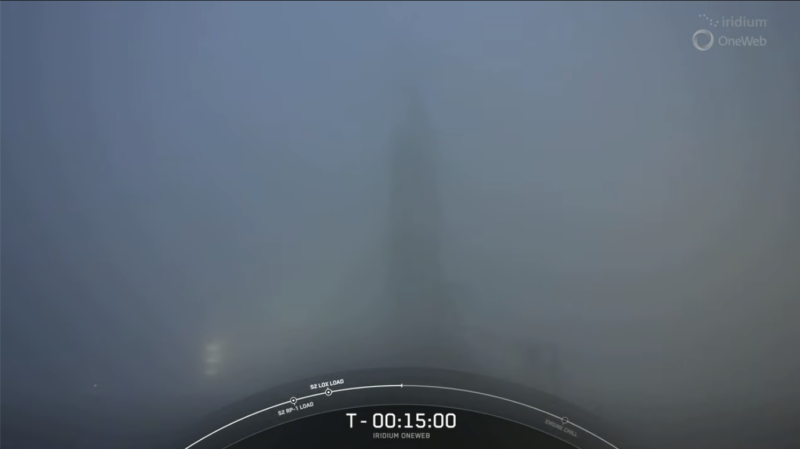
But the weather, again, remains the watchword as the weekend draws to its close. At a post-Flight Readiness Review (FRR) news conference earlier this week, NASA officials noted that Ax-2 is aiming for a pair of launch attempts on Sunday 21st and Monday 22nd, before the flight would nominally need to stand down to make way for the high-priority CRS-28 Cargo Dragon research mission on 3 June.
Current predictions from the 45th Weather Squadron at Patrick Space Force Base show that Sunday evening is the most favorable, albeit with only a 60-percent likelihood of acceptable conditions. That is expected to deteriorate sharply to only 20-percent-favorable by Monday evening’s 5:14 p.m. EDT launch time and—if teams decide to press ahead with a third backup date—around 30-percent-favorable on Tuesday 23rd.
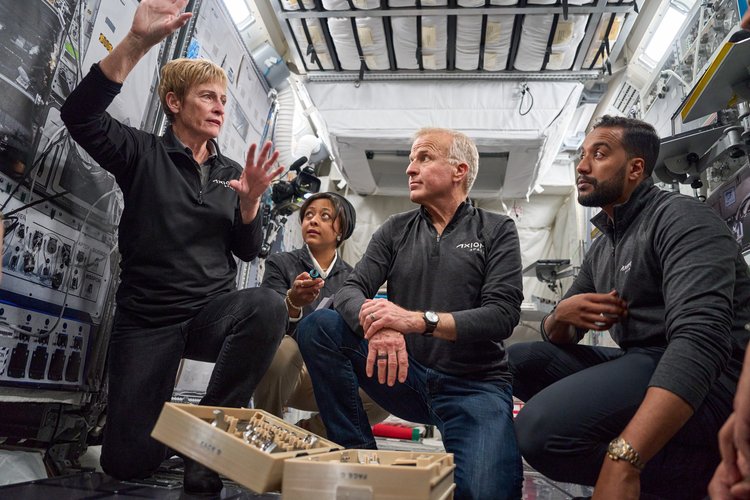
“On Sunday, a new boundary will likely be close to Central Florida, again providing ingredients for widespread afternoon and evening convection,” the 45th reported on Friday. “Luckily, the prevailing flow will allow the East Coast sea-breeze to move inland, keeping most storms away from the Spaceport.” Key threats for Sunday’s 5:37 p.m. EDT opening launch attempt are violations of the Anvil Cloud Rule and Cumulus Cloud Rule.
By Monday, long-range guidance suggests the formation of a low-pressure area, creating “messy pattern” across Central Florida, “with widespread convection likely”. Risks to the Ax-2 launch in the opening days of next week center upon potential violations of the Cumulus Cloud Rule, Anvil Cloud Rule, Debris Cloud Rule and Flight Through Precipitation Rule, offering a particularly dismal overall picture.
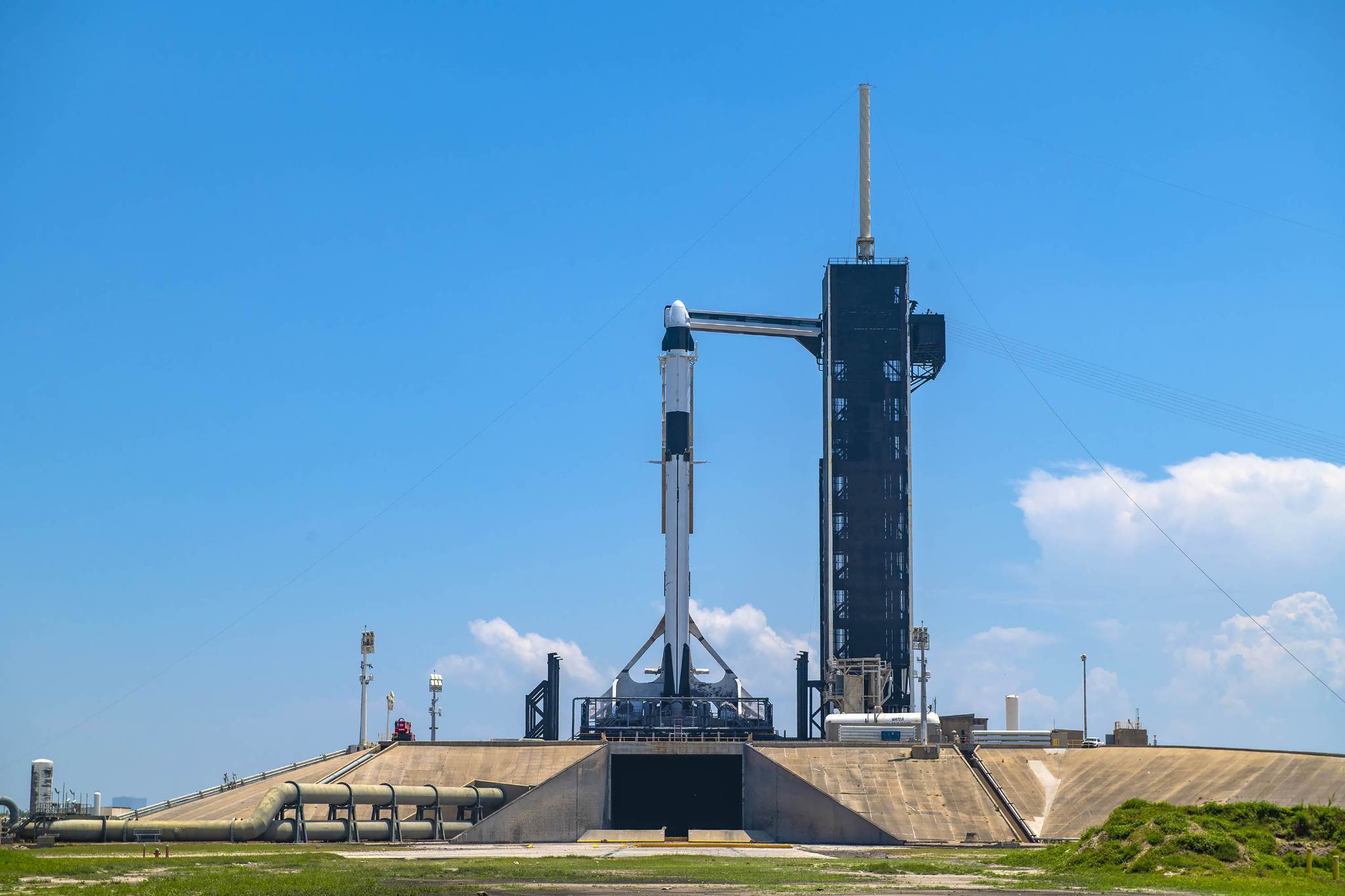
As noted earlier this week after the FRR, Ax-2 has been shortened from 12 to ten days, with Dragon Freedom’s docked time correspondingly reduced from ten to eight days, with several low-priority activities omitted. This change has been implemented to make the mission “fit” into a busy summer manifest, with the CRS-28 Cargo Dragon scheduled to launch in early June for a month-long research stay and the long-awaited Crew Flight Test (CFT) of Boeing’s CST-100 Starliner on 21 July.
The brand-new B1080 Falcon 9 booster for Ax-2 was rolled out from the Horizontal Integration Facility (HIF) to Pad 39A on Thursday, with a Dry Dress Rehearsal (DDR) and Static Fire Test of the nine Merlin 1D+ engines expected later Friday. After Sunday evening’s launch, Dragon Freedom—making her second trip to space, following a 170-day duty in support of last year’s Crew-4 increment—will dock at the space station at about 9:24 a.m. EDT Monday.
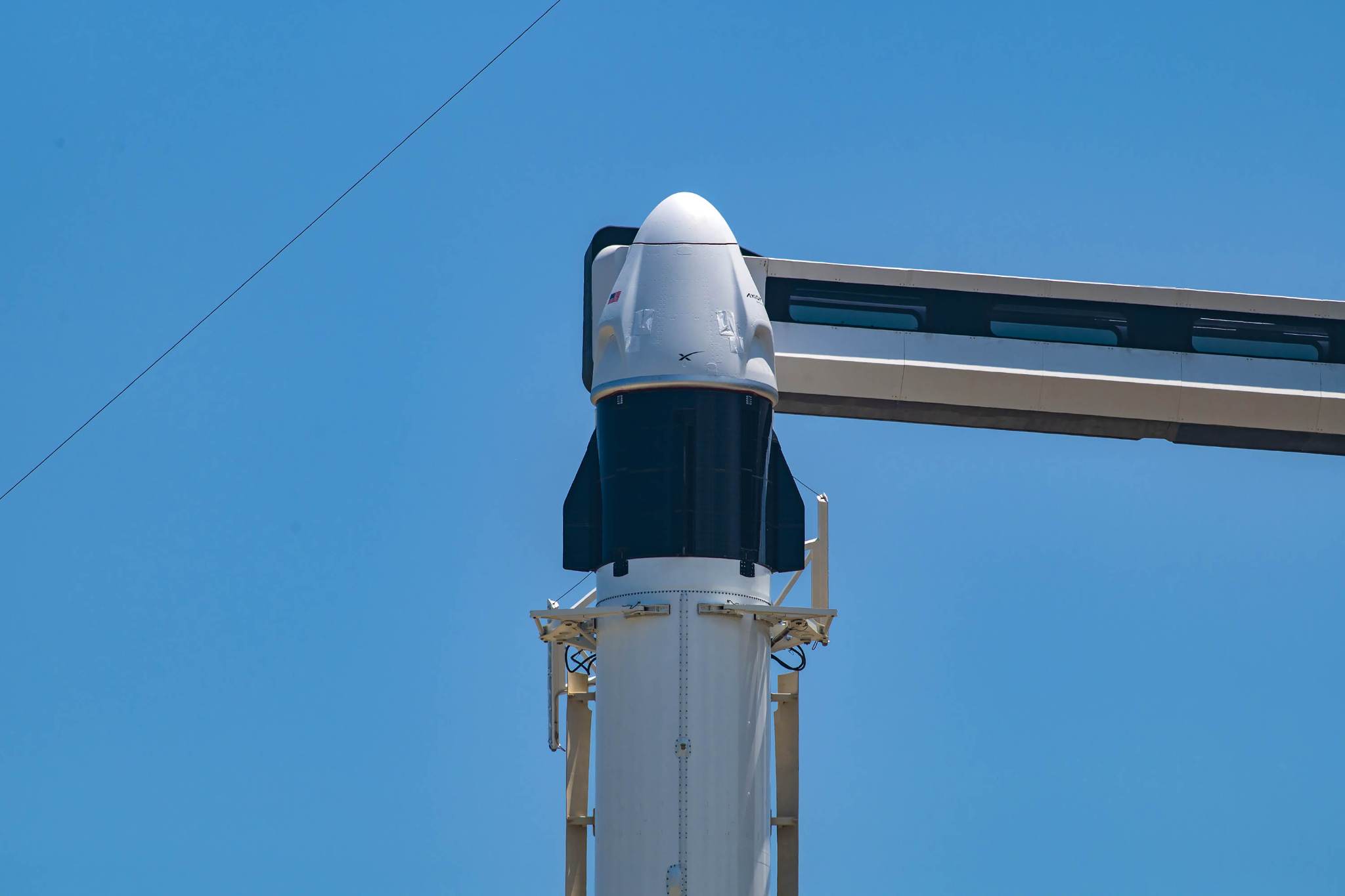
Whitson and her crew will facilitate more than 20 multidisciplinary experiments spanning the life sciences, human research, physical sciences and technology, and support about 130 hours of National Lab Science during their time aboard the ISS. They also plan to carry several personal items with them: Whitson will fly her wedding necklace, Shoffner a toy spaceman from a Gemini spacecraft model he built as a child, Barnawi’s grandmother’s earrings and Saudi coffee and dates, courtesy of Al-Qarni.




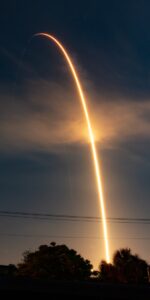
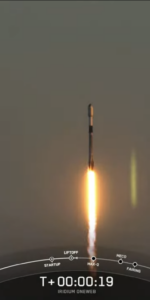
4 Comments
4 Pings & Trackbacks
Pingback:SpaceX Launches 2023’s Tenth Vandenberg Mission, Ax-2 Completes Static Fire - AmericaSpace
Pingback:SpaceX Aims to Launch Saudi Arabian Satellite Tonight - AmericaSpace
Pingback:SpaceX Flies Year’s 60th Falcon 9 Mission, Looks Back on Record-Setting 2023 - AmericaSpace
Pingback:SpaceX Kicks Off October, Flies Year’s 70th Falcon Mission - AmericaSpace